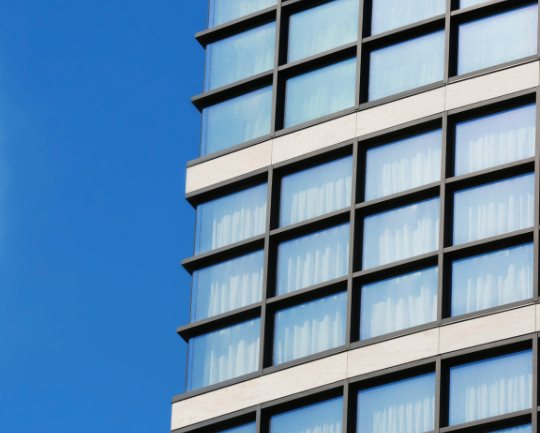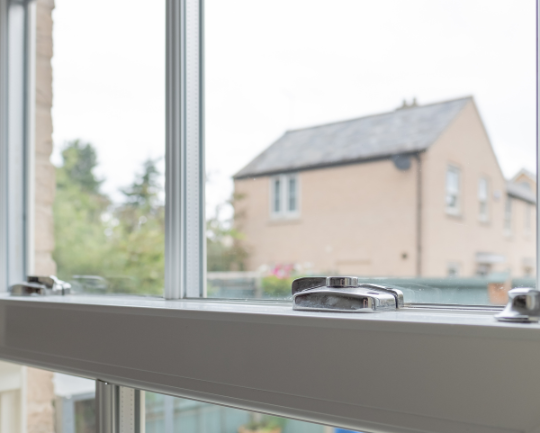In the hustle and bustle of modern life, it’s easy to overlook the importance of our humble windows. Yet, they serve as the gateways to our homes, letting in light, warmth, and sometimes, unwanted glares and heat. This is where residential window tinting steps in as the unsung hero, offering a solution that not only enhances privacy but also contributes to energy efficiency and comfort within our living spaces.
In this comprehensive guide to residential window tinting, we’ll delve into everything you need to know about this discreet yet impactful home improvement. From understanding the different types of window films available to exploring the benefits they bring, we’ll equip you with the knowledge to make informed decisions for your home. Say goodbye to glaring sun rays and hello to a more comfortable, energy-efficient living environment with the power of residential window tinting.
Understanding the Benefits of Residential Window Tinting
Beyond its aesthetic appeal, window tinting offers a myriad of benefits that make it a worthwhile investment for any homeowner. In this comprehensive guide, we’ll delve into the various advantages of residential window tinting, shedding light on why it’s an increasingly popular choice for enhancing homes across the globe.
 Enhanced Privacy: One of the primary benefits of residential window tinting is the increased privacy it provides. By applying tinted film to your windows, you can effectively shield the interior of your home from prying eyes, allowing you and your family to enjoy greater seclusion without sacrificing natural light.
Enhanced Privacy: One of the primary benefits of residential window tinting is the increased privacy it provides. By applying tinted film to your windows, you can effectively shield the interior of your home from prying eyes, allowing you and your family to enjoy greater seclusion without sacrificing natural light.
- Improved Security In addition to enhancing privacy, window tinting also reinforces the security of your home. The thick, durable film acts as a barrier, making it more difficult for intruders to break through the glass. This added layer of protection can give homeowners peace of mind, particularly in areas prone to burglary or vandalism.
- UV Protection: Harmful ultraviolet (UV) rays from the sun can wreak havoc on your skin and furnishings. Residential window tinting helps mitigate this risk by blocking up to 99% of UV radiation, thereby reducing the fading and deterioration of furniture, flooring, and other interior surfaces. By safeguarding your belongings from sun damage, tinted windows help preserve their beauty and value over time.
- Energy Efficiency: Energy efficiency is a key concern for many homeowners, especially as utility costs continue to rise. Fortunately, residential window tinting can play a significant role in reducing energy consumption. By minimizing heat gain in the summer and heat loss in the winter, tinted windows help regulate indoor temperatures, easing the burden on your heating and cooling systems and ultimately lowering your utility bills.
- Glare Reduction: Excessive glare can make it difficult to work, relax, or even watch television comfortably. With residential window tinting, you can significantly reduce glare without sacrificing natural light. By filtering out harsh sunlight, tinted windows create a more visually comfortable environment, allowing you to enjoy clear views and reduced eye strain indoors.
How Residential Window Tinting Can Lower Your Bills
In the quest for a more energy-efficient home, homeowners often explore various avenues, from upgrading appliances to enhancing insulation. However, one often overlooked yet highly effective solution is residential window tinting. This article delves into the significant impact that window tinting can have on lowering your utility bills and creating a more sustainable living environment.
 Understanding the Role of Windows in Energy Efficiency
Understanding the Role of Windows in Energy Efficiency
Windows play a crucial role in the energy dynamics of a home. While they allow natural light to enter and offer views of the outdoors, they can also be significant sources of heat gain in the summer and heat loss in the winter. This thermal exchange can lead to increased reliance on heating and cooling systems, resulting in higher energy consumption and utility costs.
How Window Tinting Works
Residential window tinting involves applying a thin, transparent film to the interior surface of windows. This film is designed to selectively filter out certain wavelengths of light, including ultraviolet (UV) radiation and infrared (IR) heat. By blocking these components of sunlight, window tinting helps regulate indoor temperatures and reduce the strain on HVAC systems.
Reducing Heat Gain in Summer
During the summer months, sunlight streaming through windows can significantly elevate indoor temperatures, forcing air conditioners to work harder to maintain comfort levels. Window tinting acts as a barrier against solar heat gain by reflecting and absorbing a portion of the incoming solar radiation. This helps keep indoor spaces cooler and more comfortable, reducing the need for excessive air conditioning and lowering energy consumption.
Retaining Heat in Winter
In colder climates, windows can be a major source of heat loss, especially if they are single-pane or poorly insulated. Window tinting provides an added layer of insulation by reducing heat transfer through the glass. It helps trap warmth inside the home, allowing heating systems to operate more efficiently and reducing heating costs during the winter months.
Balancing Natural Light and Energy Efficiency
One common concern with window tinting is its potential to darken indoor spaces and obstruct views. However, modern window tinting products are designed to maintain clarity and transparency while still providing effective heat rejection. Homeowners can choose from a variety of tint shades and levels to achieve the desired balance between natural light, privacy, and energy efficiency.
Maintenance Tips for Long-Lasting Window Tinting
Maintaining your residential window tinting is crucial for ensuring its longevity and effectiveness. Proper care not only keeps your windows looking great but also maximizes their benefits in terms of UV protection, energy efficiency, and privacy. Here are some maintenance tips to help you keep your window tinting in optimal condition for years to come
- Regular Cleaning: Clean your tinted windows regularly using a soft, non-abrasive cloth or sponge and a mild detergent solution. Avoid using abrasive cleaners or rough materials that could scratch or damage the tint film.
- Avoid Harsh Chemicals: Refrain from using ammonia-based or abrasive cleaning products, as they can degrade the tint film and cause it to peel or bubble. Stick to mild, non-ammonia cleaners to preserve the integrity of the tint.
- Drying Technique: After cleaning, use a soft, lint-free cloth to dry the windows thoroughly. Avoid leaving any moisture or streaks behind, as this can affect the appearance of the tint and lead to water spots.
- Be Mindful of Sharp Objects: Take care when handling objects near tinted windows to avoid accidentally scratching or puncturing the film. Keep sharp objects away from the windows, especially during cleaning or maintenance.
- Protective Coverings: Consider using protective coverings, such as curtains or blinds, to shield your tinted windows from direct sunlight when they’re not in use. This can help prolong the life of the tint film by reducing exposure to UV rays and heat.
From Ancient Techniques to Modern Precision
Key cutting, a seemingly mundane task in the realm of locksmithing, holds within its history a fascinating journey spanning millennia. From ancient civilizations to the modern-day technological marvels, the evolution of key cutting is a testament to human ingenuity and the relentless pursuit of security.
The Birth of Key Cutting
The earliest known locks and keys date back to ancient civilizations such as Egypt and Mesopotamia. These early locks were rudimentary in design, often crafted from wood or metal and secured by simple wooden pins or pegs. Key cutting during this time involved basic shaping of metal or wood to create rough implements that could manipulate these primitive locks.
From Craftsmanship to Artistry
During the Middle Ages, key cutting evolved alongside advancements in metallurgy and craftsmanship. Locksmiths became skilled artisans, handcrafting keys with intricate designs and patterns. The keys themselves became symbols of status and wealth, adorned with elaborate engravings and embellishments. Key cutting techniques during this period relied heavily on manual tools such as files and chisels, requiring meticulous precision and attention to detail.
Mass Production and Standardization
The Industrial Revolution brought about significant changes in key cutting, ushering in an era of mass production and standardization. With advancements in manufacturing technology, keys could now be produced en masse with unprecedented speed and consistency. The introduction of key-cutting machines automated much of the process, allowing locksmiths to churn out precise duplicates with ease. This marked a shift from the artisanal approach of the past to a more industrialized method of key production.
The Dawn of Modern Precision
Computer-aided design (CAD) software allowed for the creation of intricate key profiles, while laser-cutting machines could carve out precise shapes with micron-level accuracy. This marriage of technology and craftsmanship has elevated key cutting to new heights of sophistication, ensuring seamless operation and maximum security.
Blending Tradition with Innovation
While advanced machinery and computerized systems have streamlined the process, the artistry and expertise of the locksmith remain indispensable. Locksmiths today possess a deep understanding of lock mechanisms and key design, allowing them to craft custom solutions tailored to individual security needs. Whether it’s duplicating a traditional metal key or programming a transponder key for a modern vehicle, locksmiths continue to adapt their skills to meet the evolving demands of their clients.
CONCLUSION
Quality Auto Glass Tint Inc. provides an extensive and informative resource on residential window tinting, catering to the needs of homeowners in Salida, California, and beyond. With a commitment to excellence and customer satisfaction, we offer professional services aimed at enhancing privacy, reducing energy costs, and improving the aesthetic appeal of homes. Through our comprehensive guide and dedication to quality, we empower individuals to make informed decisions about window tinting solutions, ensuring a comfortable and efficient living environment for years to come. Contact us at (209) 900-8269 to experience the difference our expertise can make in your home.




